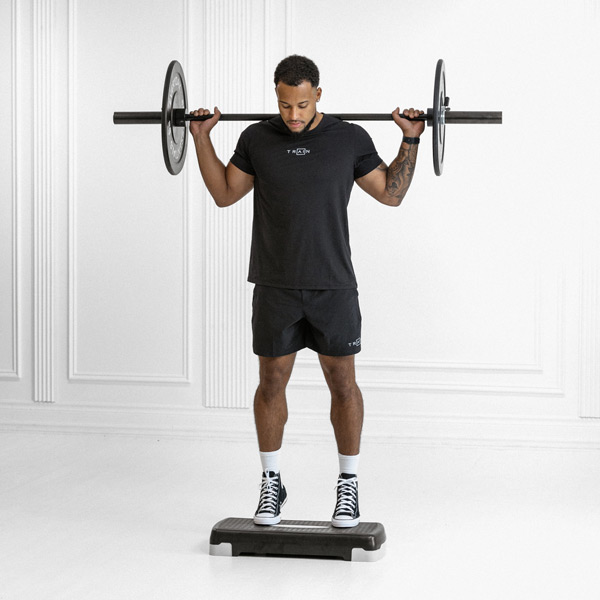Jump Rope
 Auto Detected
Auto DetectedA portable cardiovascular exercise with a jump rope that targets calves, core, and shoulders to build endurance, coordination, and agility; commonly scaled by speed or variations like double unders.
About Exercise
Equipment
Jump Rope
Difficulty
2/5 • Beginner
Primary Muscle Groups
Calves
Secondary Muscles
Glutes, Abs, Forearms, Shoulders
Popularity Score
8
Goals
Training Style
Setup Requirements
Requires Rack
No
Requires Bench
No
Requires Spotter
No
Space Needed
Small
Noise Level
Moderate
Muscle Breakdown
View Muscle MapCalves
9/10Gastrocnemius, Soleus
Quads
6/10Rectus Femoris
Glutes
5/10Glute Max
Abs
5/10Rectus Abdominis
Forearms
4/10Flexors
Shoulders
3/10Anterior Delts
Programming
Typical Rep Range
60-100 reps
Rest Between Sets
30-60 seconds • Recover fully before next set
How to Perform
Stand tall on a forgiving surface with feet together and knees slightly bent. Hold jump rope handles lightly at hip level with elbows close to sides, rope behind heels.
- Rotate rope over head using wrists.
- Jump 1-2 inches as rope nears feet.
- Land softly on balls of feet with bent knees.
- Maintain neutral spine and engaged core.
- Continue rhythmic wrist flicks for steady pace.
- Absorb impact by bending knees on landing.
Coaching Tips
Form Cues
- Stay light on feet
- Flick wrists only
- Core tight
- Land soft
- Eyes forward
- Rhythm steady
Breathing
Breathe deeply and naturally in rhythm with jumps; exhale on takeoff and inhale on landing.
Tempo
1-0-1
Range of Motion
Full rope rotation from behind heels overhead to feet; jump height 1-2 inches off ground with knees bending 20-30 degrees on landing.
Safety
Safety Notes
- Use cushioned surface to protect joints
- Adjust rope length to avoid tripping
- Warm up ankles and calves first
- Stop if shin pain occurs
- Wear supportive shoes
- Avoid if acute joint issues present
Spotting
No spotting needed; self-monitor form and space clearance.
Common Mistakes
- Jumping too high wastes energy
- Using arms instead of wrists fatigues quickly
- Locking knees risks injury
- Poor posture strains back
- Inconsistent rhythm disrupts flow
When to Avoid
- Acute ankle or knee injuries
- Balance disorders
- High impact intolerance
Flexibility Needed
- Adequate ankle dorsiflexion for landing
- Shoulder flexion for rope control
Build Up First
- Basic coordination and rhythm sense
- Comfort with light jumping
Also known as
Skipping, Rope Jumping, Speed Skipping
Found this helpful?
Share your thoughts or help us improve this guide.
Similar Exercises
Double Under Jump Rope
Jump Rope
Calves, Forearms
Jump Rope Front to Back
Jump Rope
Calves

Single-Leg Jump Rope
Jump Rope
Calves
High Knees Jump Rope
Jump Rope
Quads, Calves

Boxer Shuffle
Bodyweight
Calves
Battle Rope Jumping Jacks
Battle Ropes
Shoulders, Forearms
Barbell Single-Leg Standing Calf Raise
Barbell, Squat Rack
Calves

Barbell Standing Calf Raise

Barbell, Plates
Calves

Bodyweight Calf Raise
Bodyweight
Calves
Box Calf Stretch
Plyometric Box
Calves


subscribe to our newsletter
Contact Us
hello@trainfitness.aiFind Us
130 Spadina Avenue, Toronto,
Ontario, M5V 0H4, Canada
©2025 All Rights Reserved
